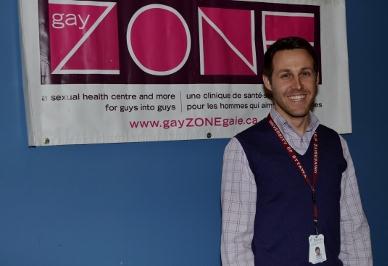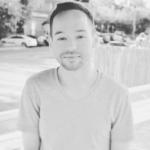The Ontario HIV Treatment Network (OHTN) is launching a pilot project to give gay men who may have been exposed to HIV free treatment to prevent infection.
Until now, gay men who may have been exposed to HIV during consensual sex have had to pay between $1,000 and $1,500 for the medication, called a post-exposure prophylactic (PEP.) Now, they’ll be able to access PEP at no cost at the Centretown Community Health Centre’s Gay Zone and the city-run Sexual Health Centre.
OHTN is putting up $51,000 to launch the project in conjunction with Ottawa Public Health (OPH,) The AIDS Committee of Ottawa (ACO) and the Ottawa Hospital. OHTN receives the majority of its funding from the government of Ontario.
“We’re supposed to be preventing infection,” says OPH nurse Marie Roy, who conceived the project last summer. “[PEP] was already available yet difficult to access. By bringing it to the community level, we are hoping to increase accessibility.”
HIV prevention medication is not something someone should have to visit a hospital to access, says project lead Dr Patrick O’Byrne, of the University of Ottawa. He thinks PEP should be readily available at community-based health centres.
“Our goal was to move beyond a biomedical approach to PEP, where we say, ‘Here are your pills; go buy them if you can and then continue taking them by yourself, and we’ll see you back in three months,’” O’Byrne says.
In addition to providing PEP free of charge, the program will offer gay men the option to seek counselling through the ACO or OPH during their course of PEP and after testing. “We’ve created this more comprehensive system where if people want support it is available in different ways,” O’Byrne says.
The province of Ontario already subsidizes PEP for victims of sexual assault, and insurance covers most healthcare workers who may get exposed at work. But gay men who find themselves potentially exposed to HIV through consensual sex have, until now, had to pay for PEP out of their own pockets.
O’Byrne says he is puzzled as to why the province will not cover the prophylactic for consensual gay sex.
“A needle stick is high risk because it pierces the skin, but the likelihood of being stuck with a needle that has HIV is astronomically small. With sexual assault, the possibility of exposure exists, but again that probability of exposure is infinitesimal. In this case, we have a sexual contact where, if it’s unprotected anal, you have the highest risk of transmission. Plus, just based on our statistics, we have one of the highest likelihoods of exposure in gay men, but that’s not covered.”
Jane Greer, an administrator for Toronto’s Hassle Free Clinic, told Xtra in 2009 that the personal cost of PEP is a huge barrier for most patients. Greer said the province should pay for PEP for everyone who needs access to the medication.
“I see [PEP] very much as a medicine that should be available to those who need it,” Greer said.
Ontario’s minister of health and long-term care, Deb Matthews, did not respond to a request for comment at press time.
Meredith Kratzmann, manager of research, funding and development at OHTN, says its scientific review committee deemed the pilot project as having great “importance, relevance and the potential for impact.”
“If they are able to make PEP more available in the community and increasing accessibility, that’s obviously something that is important in terms of prevention efforts,” Kratzmann says.
Dr Paul MacPherson, of the Ottawa Hospital, says he hopes the PEP project will not only increase accessibility, but also raise awareness among gay men.
“I’m not sure the average gay guy in the city is aware of PEP. I’m hoping that it will increase their awareness and their willingness to access it,” he says.
Based on data from Montreal, O’Byrne projects that two to four people will access the program per month and reminds gay men that the sooner PEP is initiated after exposure the better. PEP is considered effective only if it begins within 72 hours after exposure.
The future of the project depends on how many individuals access PEP during the pilot, O’Byrne says.
“If, for instance, no one uses it, then the project needs to be reexamined. However, if the project is highly successful, based on an array of indicators, then it will continue to run,” O’Byrne explains. “Basically, we need data first to decide if and how to continue.”
The project launches next month.


 Why you can trust Xtra
Why you can trust Xtra


